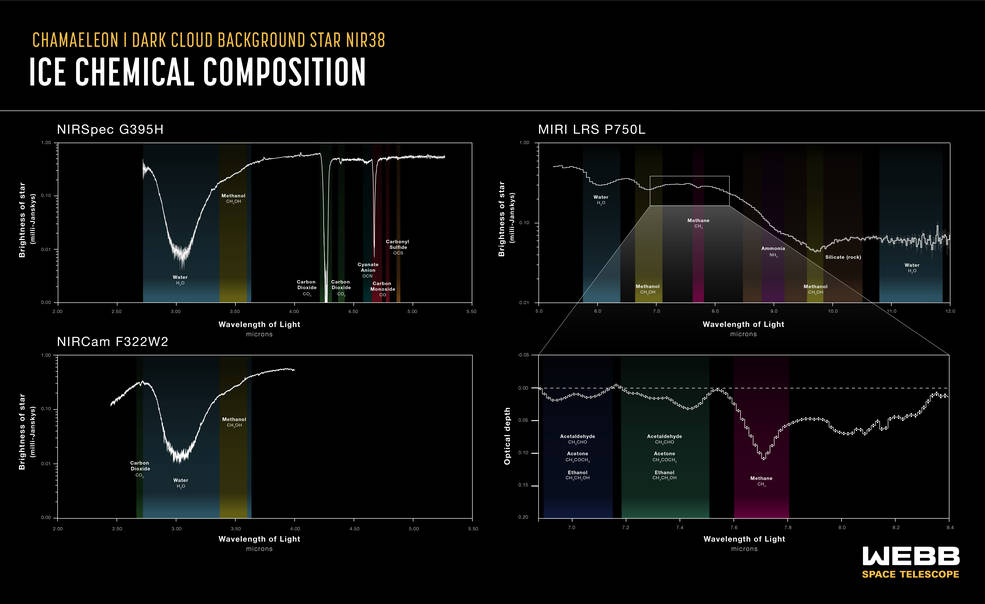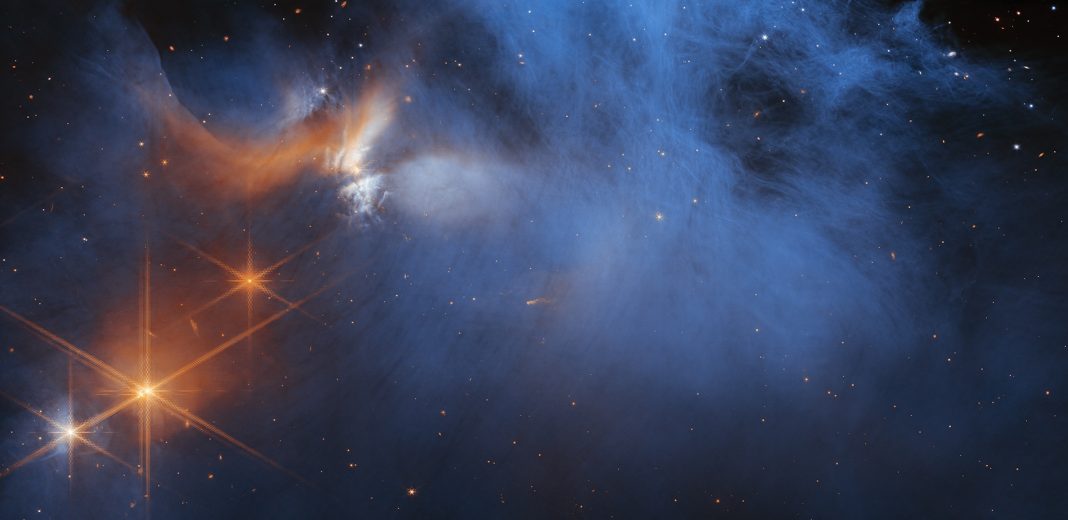Different particles of space ice have been discovered by the James Webb Space Telescope (JWST) in a molecular cloud’s darkest and coldest regions
The new JWST findings have allowed astronomers to examine the icy molecules that will be incorporated into future exoplanets while opening a new window on the origins of more complex molecules that are the first step in the creation of life.
Targeting the ices buried in a particularly cold, dense, and difficult-to-investigate region of the Chameleon I molecular cloud, a region roughly 600 light-years from Earth which is currently in the process of forming dozens of young stars and planets.

Credits: NASA, ESA, CSA, and J. Olmsted (STScI)
Space ice: The connection between ice and life
Ices are vital for a habitable planet as they carry several essential light elements such as carbon, hydrogen, and oxygen.
These elements are important ingredients in molecules such as sugars and alcohols, as well as planetary atmospheres and surfaces that enable life to form and grow. With the power ice holds, through analysis, the team discovered ‘interstellar molecular clouds’ could provide insights into the building blocks of life across the universe.
Interstellar chemistry
“Our results provide insights into the initial, dark chemistry stage of the formation of ice on the interstellar dust grains that will grow into the centimetre-sized pebbles from which planets form in disks,” said Melissa McClure, astronomer at Leiden Observatory in the Netherlands, and principal investigator of the observing program.
“These observations open a new window on the formation pathways for the simple and complex molecules that are needed to make the building blocks of life.”
“Open a new window on the formation pathways for the simple and complex molecules”
In a written report for NASA the team also explained to have found evidence for molecules more complex than methanol, and, although they didn’t definitively attribute these signals to specific molecules, this proves for the first time that complex molecules form in the icy depths of molecular clouds before stars are born.
The technology of the future being utilised now
“We simply couldn’t have observed these ices without Webb,” elaborated Klaus Pontoppidan, Webb project scientist at the Space Telescope Science Institute in Baltimore, Maryland. “The ices show up as dips against a continuum of background starlight. In regions that are this cold and dense, much of the light from the background star is blocked, and Webb’s exquisite sensitivity was necessary to detect the starlight and therefore identify the ices in the molecular cloud.”
The space ice was detected by studying how starlight from stars beyond the molecular cloud was absorbed by molecules at specific infrared wavelengths, visible to Webb. This process leaves behind chemical fingerprints, known as absorption spectra, in the infrared light which Webb detects and records.
This release from the JWST is the most comprehensive census to date of the icy ingredients available to make future generations of stars and exoplanets. Having only been active for six months as of January 2023, the immense amount of data collected from the JWST is incredible.
Through the combination of the telescopes MIRI, NIRCam and NIRSpec instruments, scientists can recreate an incredibly detailed image of the data, continually unlocking new insights into the formation.











